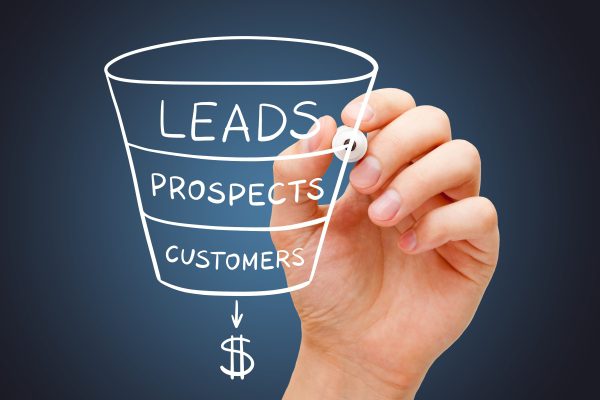
How to Develop an Outstanding Business Development Plan
Developing a great business development plan requires a strategic mindset, comprehensive analysis, and meticulous execution. This may involve pursuing new market opportunities, diversifying products or services, expanding into untapped regions, forging strategic alliances or partnerships, or enhancing customer engagement. The strategies should be realistic, measurable, and time-bound to ensure effective execution.
The business development plan should include a well-defined implementation process with clear responsibilities and timelines. It is essential to allocate sufficient financial and human resources to execute the plan effectively. Regularly monitoring and evaluating progress against the set targets is critical, allowing for timely adjustments and corrective actions when necessary. By creating a well-structured plan that aligns with the organization’s goals, identifying growth opportunities, and implementing effective strategies, businesses can position themselves for long-term success and remain competitive in a rapidly evolving marketplace.
Here are 8 proven steps to developing a winning business development plan:
1. Conduct a Comprehensive Business Analysis

Conduct a thorough analysis of various aspects of the business, such as market trends, customer demands, competition, and internal capabilities. This will provide you with invaluable insights to inform the development plan.
Through a comprehensive analysis, you can identify your business’s strengths, weaknesses, opportunities, and threats (SWOT analysis) and capitalize on your advantages while mitigating risks. It helps in understanding the market landscape, target audience, and emerging trends, enabling you to effectively align your development plan with market demands and customer expectations. Additionally, analyzing competitors’ strategies and industry benchmarks allows you to differentiate yourself from the crowd and gain a significant competitive edge.
2. Define Clear Goals and Objectives
Clearly defined goals and objectives provide a sense of direction and purpose, guiding the entire development process toward success. By setting specific, measurable, attainable, relevant, and time-bound (SMART) goals, you can effectively chart your path to growth and expansion.
Furthermore, clear goals and objectives provide a basis for evaluating the plan’s progress and success. They enable your organization to track key performance indicators (KPIs), measure performance against targets, and make data-driven adjustments if necessary. Regularly reviewing and assessing the progress towards these goals allows for continuous improvement and ensures that your plan remains aligned with the evolving business landscape.
3. Identify Target Markets and Ideal Customers
Identifying target markets and ideal customers enables you to concentrate your efforts, align your strategies with customer needs, and seize lucrative opportunities for sustainable growth and success.
Pinpointing ideal customers also empowers you to discover untapped opportunities and niche markets that align with your strengths and capabilities. This knowledge allows you to position yourself effectively, stand out from competitors, and tailor your offerings to meet the unique demands of your ideal customers.
4. Craft a Compelling Value Proposition
A compelling value proposition serves as the foundation that defines the distinct value your business offers to its target customers, setting it apart from competitors. By presenting a clear and engaging message, the value proposition becomes the linchpin of the plan, resonating with the intended audience.
Additionally, a compelling value proposition guides the strategic decisions and actions outlined in the business development plan. It assists in identifying target markets, shaping marketing strategies, and determining pricing and positioning approaches. The value proposition ensures that all activities and initiatives align with your business’s unique value, creating a unified and consistent customer experience.
5. Create Lead Generation Strategies
Lead generation strategies play a critical role in attracting potential customers and nurturing them into loyal patrons.

By implementing robust lead generation strategies, you can generate a consistent flow of qualified leads, nurturing them through the sales funnel and converting them into loyal customers. This drives revenue growth, enhances customer relationships, and fuels the overall success of the business development plan.
6. Establish Sales and Conversion Processes
Establishing effective sales and conversion processes can help streamline your operations and maximize the conversion of leads into paying customers. Having well-defined sales processes enables businesses to effectively manage leads and guide them through each stage of the sales funnel. This includes activities such as lead qualification, nurturing, and closing.
By implementing standardized processes, you can ensure consistency, efficiency, and effectiveness in your sales efforts. This helps identify bottlenecks, optimize the customer journey, and improve conversion rates.
7. Monitor, Evaluate, and Adapt
Monitoring involves tracking and evaluating the implementation of the plan’s strategies and goals to ensure effective and efficient execution. By monitoring progress, you can identify areas of success and areas that may require adjustment, enabling you to stay on track and achieve desired outcomes.
Regular monitoring allows you to assess key performance indicators (KPIs) and measure progress against set targets. This data-driven approach provides valuable insights into the plan’s effectiveness, enabling timely adjustments and corrective actions when necessary. Monitoring progress ensures you allocate resources appropriately and align activities with the plan’s objectives.
8. Build Strategic Partnerships
Strategic partnerships allow you to access new markets or customer segments that may have been difficult to penetrate independently. By leveraging the partner’s existing customer base or distribution channels, you can significantly accelerate growth and expand your customer reach more effectively. Moreover, strategic partnerships help in fostering knowledge sharing and innovation.
Bottom Line
Developing a successful business development plan requires a strategic and systematic approach. By following the steps outlined above, B2B organizations can drive customer base expansion, lead generation, and sales growth. Regularly monitor, evaluate, and adapt your plan to ensure sustainable growth and profitability.
Fostering a culture of innovation, adaptability, and continuous improvement is crucial for developing sustainable business growth. It encourages collaboration across different departments, facilitates knowledge sharing, and promotes a customer-centric approach.

Dan Gartlan helps companies of all kinds drive their business initiatives and achieve their goals with strategic marketing programs that deliver results. As President of Stevens & Tate Marketing, he has over 20 years experience across various industries, and continues to share his expertise to build brands nationwide.




